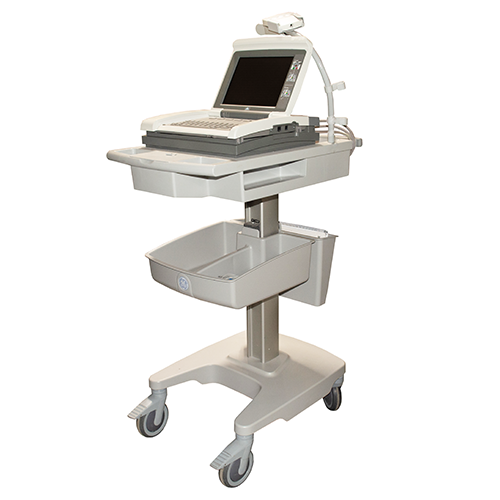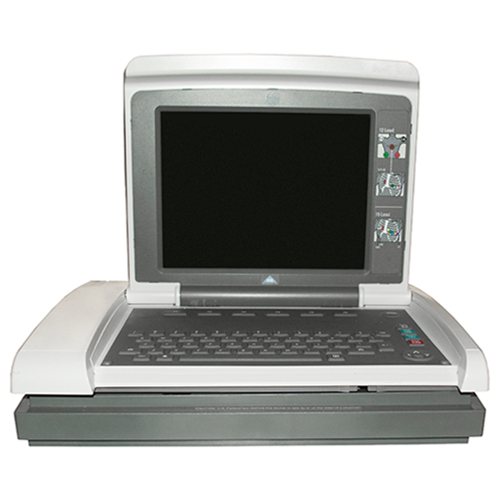EKG vs ECG | What’s the Difference Between ECG and EKG?
March 22, 2024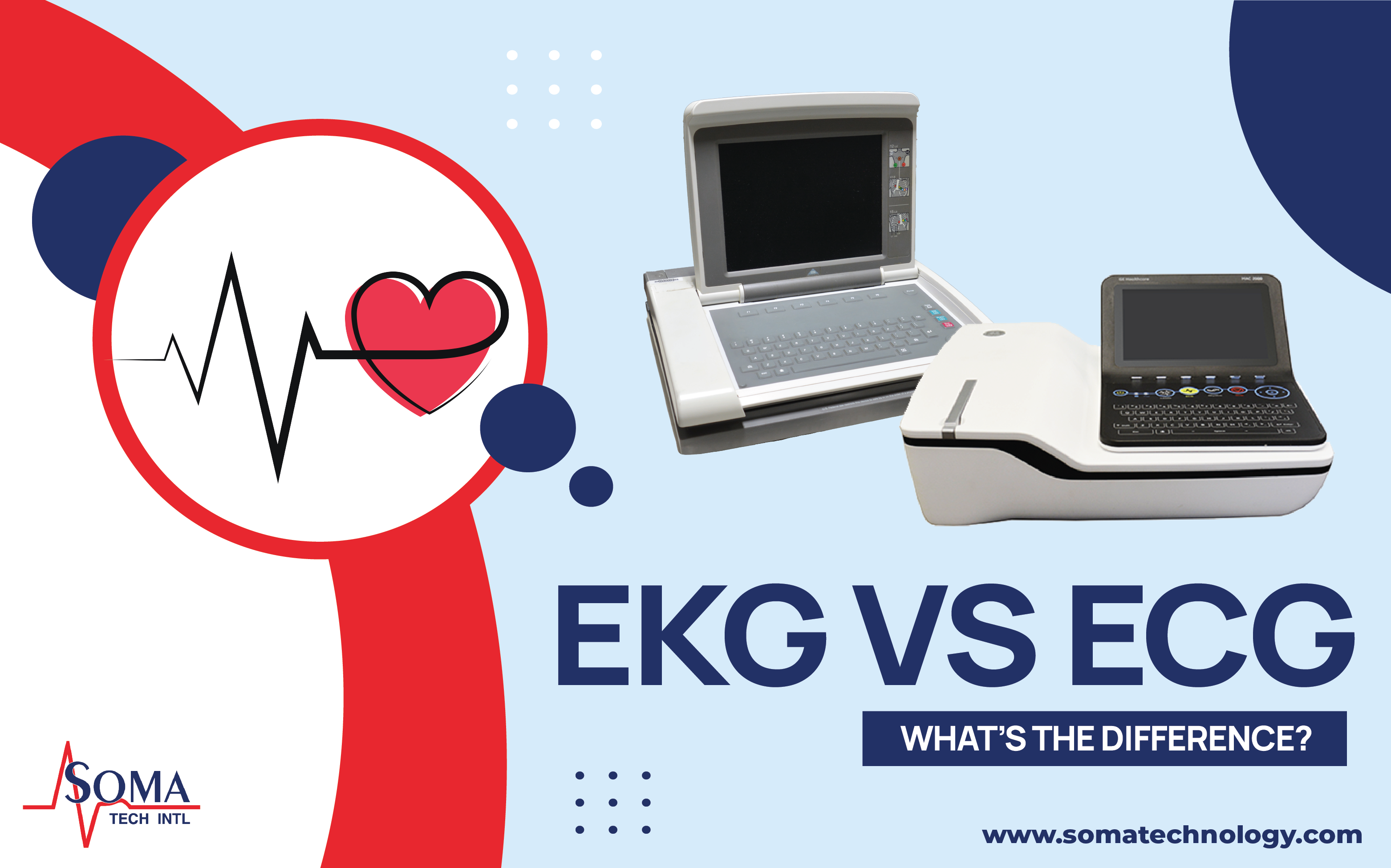
What’s the Difference Between ECG and EKG?
ECG and EKG are abbreviations for electrocardiogram. There is no difference between them. These abbreviations are used to describe a test that measures the electrical activity of the heart.
ECGs and EKGs are tools used to detect a wide range of heart dysrhythmias. There are several different types of ECG monitors including but not limited to Cardiopulmonary exercise tests, exercise EKGs (stress tests), Holter monitors, Resting 12-lead EKGs, and signal-averaged electrocardiograms.
Multiple different lead systems and constellations of leads have been tested, but the standard 12-lead ECG is the most common in the medical field. The 12-lead ECG offers numerous possibilities for diagnosing abnormalities. It displays 12 leads which are derived from 10 electrodes that are placed on the body. An electrode is a conductive pad that is attached to the skin to record electrical currents.
When Was The ECG Invented?
The first practical electrocardiogram was invented in 1901 by Willem Einthoven. He created what’s referred to as a string galvanometer. Also called an Einthoven galvanometer, this device featured an increased sensitivity compared to the current standard galvanometer of the time. The increased sensitivity allowed for more accurate recordings of the heart’s electrical activity despite the insulation of flesh and bones.
This was one of the earliest devices that were capable of recording the small electrical currents produced by the human heart. Patients were seated with both arms and 1 leg in separate buckets filled with saline solution. These buckets acted as electrodes to conduct the current from the skin to the filament in the device. The three points of electrode contact on these limbs produce what is now referred to as Einthoven’s triangle, a principle that is still used in ECG recording today.
What are 3 Reasons a Person Would Get an EKG?
ECGs help doctors and other medical professionals diagnose a wide variety of heart problems. ECGs typically don’t cost that much and is a noninvasive procedure. Heart diseases can cause many symptoms, some of which can be similar to signs of other diseases. Your doctor or physician may order you to get an EKG for the following symptoms:
- Chest pain
- Fatigue/weakness
- Racing or fluttering heartbeats
- Breathing problems
What Can an ECG Tell You?
We have been using these devices to measure two important pieces of information. The first is measuring the time intervals between waves to help determine how long the electrical waves take to pass through the heart. The second is by measuring the amount of activity passing through the heart muscle.
Different heart problems can change and alter the electrical pattern your heart produces. Using the results from your EKG test, your doctor will be able to assess if you have:
- Arrhythmia / Irregular heartbeat
- Congenital heart defects
- Coronary artery diseases or a lack of blood flow
- Heart failure
- Pericarditis
- Thick or enlarged heart muscles
- and more!
How To Read an EKG Machine?
Reading an ECG or EKG can be tough. The first thing the clinician will do is take your vital signs. Assessing an individual’s vitals will give the clinician an idea if anything is immediately wrong. The first thing to know about ECGs is the waveforms. There is a P wave, the PR interval, and the QT interval which contains the QRS complex, the ST segment, and the T wave. There are a lot of variables to take into consideration when reading an ECG like current medications and medical history. Knowing this will help determine if the waves are regular or irregular after attaching the 12 leads to the patient. Continue reading here to learn how to read an EKG machine.
GE MAC 2000 EKG Machine
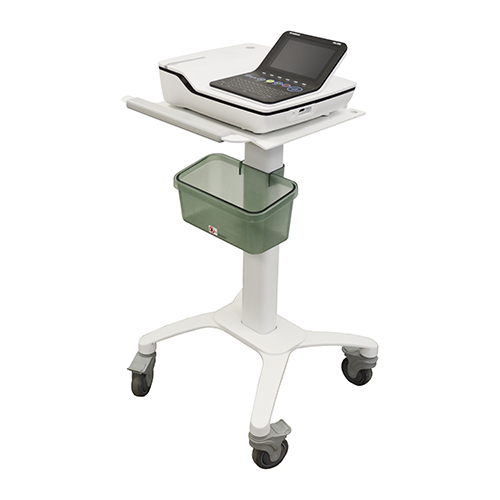
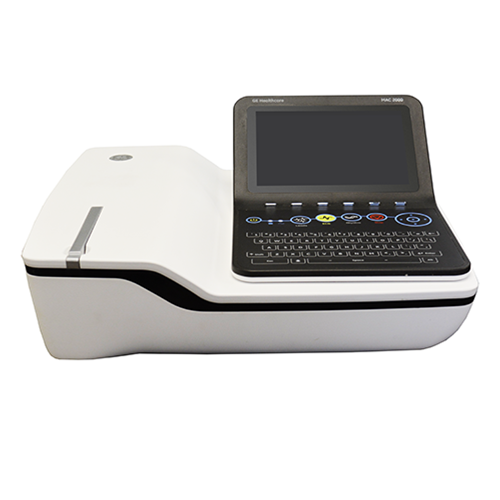
The GE Mac 2000 EKG is a 12-channel electrocardiograph. The MAC 2000 machine can hold up to 200 ECG readings internally, with features to export the reading to PDFs and XML along with wireless capabilities to connect within the healthcare facility. The GE ECG one-touch operation can give a reading in about 10 seconds. The MAC 2000 has a 7-inch color display. Another EKG by GE is the GE MAC 5500.
- A4 or US letter thermal paper size work
- 7 in easy-to-read color display
- Multiple connections and configurations to export the data
- can store up to 200 ECG reading
- Marquette 12L ECG analysis program
GE MAC 5500 EKG Machine
The GE MAC 5500 HD is a portable electrocardiography system with advanced and accurate readings. The MAC 5500 HD is a system that can provide 3, 6, 12, or 15-lead resting EKG and stress test readings. The 10.4-inch color display makes it easy to read the waveforms. The ECG system offers tools such as ACS, Analysis, ACI-TIP, and P wave signals. Providing a display and or recorded ECG information for Adult and pediatric patients. The Mac 5500 HD can easily be connected to the GE Muse system that can store and transfer data through either an Ethernet or wireless Connection to the facility’s patient database.
- Better triaging tools for Acute Coronary Syndrome (ACS) detection.
- Configurable critical values to help speed up time treatment.
- More accurate pacemaker detection for advanced interpretation of paced rhythms.
- Enhanced barcode workflow, with orders and ADT download capability, works together to help improve efficiency across the enterprise.
- Connected ECG Workflow to help save time and avoid costly misdiagnoses.
- Advanced algorithms in ECG analysis and interpretation.
Final Thoughts
The terms ECG and EKG are interchangeable, both referring to the electrocardiogram, a test crucial for assessing the heart’s electrical activity. This diagnostic tool aids in identifying various heart dysrhythmias, utilizing different monitoring systems such as Holter monitors and exercise EKGs. Willem Einthoven’s pioneering work in 1901 laid the foundation for modern ECG devices, revolutionizing cardiac diagnosis. Today, ECGs remain invaluable, aiding in detecting heart conditions like arrhythmias, coronary artery diseases, and heart failure. Understanding how to interpret EKG readings, with attention to waveforms and intervals, is vital for clinicians in diagnosing and treating patients effectively. Our featured products in this blog, the GE MAC 2000 and 5500, embody the significance of EKG/ECG machines as discussed earlier. For more information on these products, please visit https://www.somatechnology.com/
Explore Other Blog Items By Category
Recent Posts


